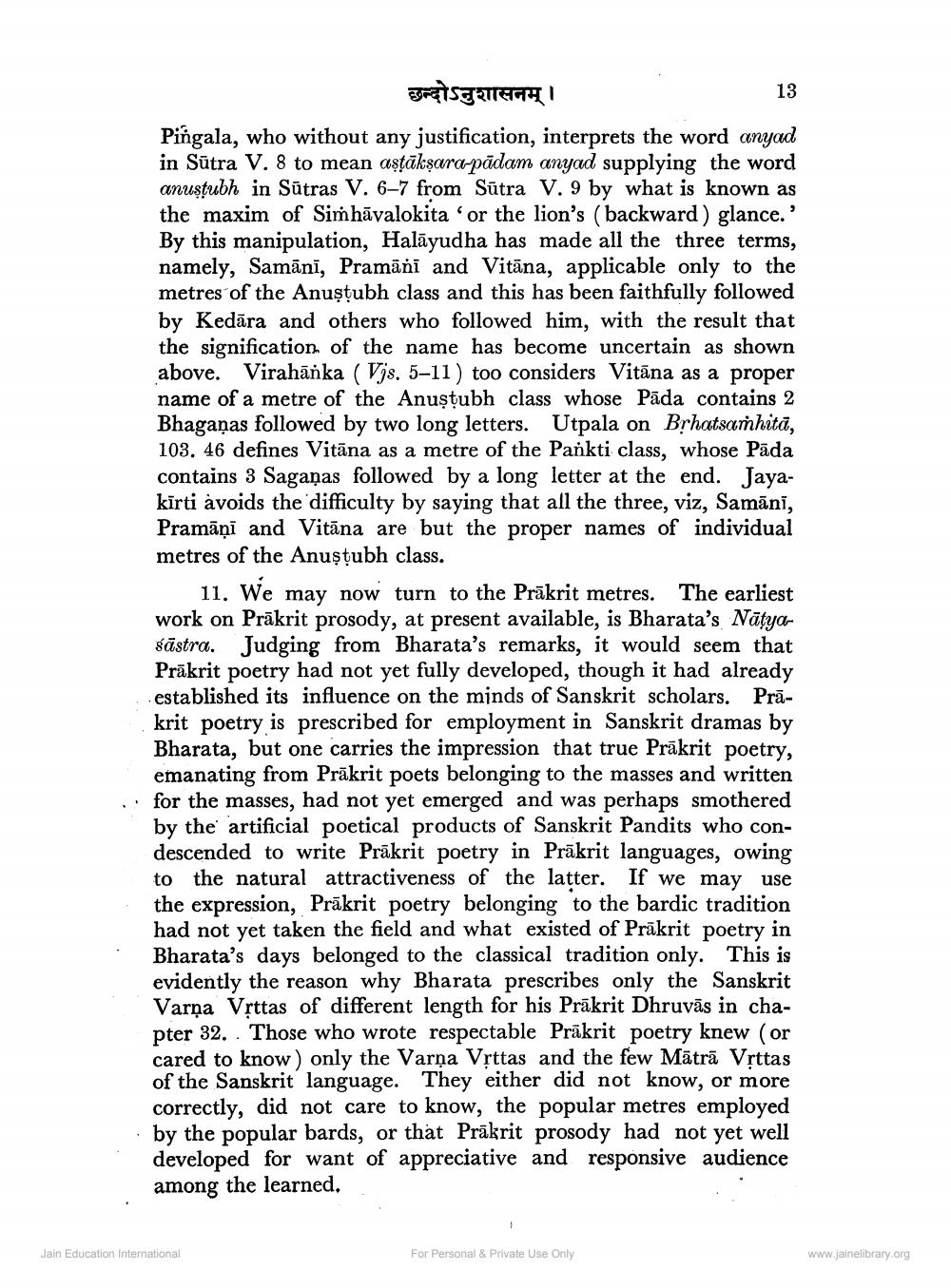________________
छन्दोऽनुशासनम् ।
13 Pingala, who without any justification, interprets the word anyad in Sūtra V.8 to mean astākşara-pādam anyad supplying the word anustubh in Sūtras V. 6-7 from Sūtra V. 9 by what is known as the maxim of Simhāvalokita' or the lion's (backward) glance.' By this manipulation, Halāyudha has made all the three terms, namely, Samānī, Pramānī and Vitāna, applicable only to the metres of the Anuştubh class and this has been faithfully followed by Kedāra and others who followed him, with the result that the signification of the name has become uncertain as shown above. Virahānka (Vjs. 5-11) too considers Vitāna as a proper name of a metre of the Anuştubh class whose Pāda contains 2 Bhagaņas followed by two long letters. Utpala on Brhatsaṁhitā, 103. 46 defines Vitāna as a metre of the Pańkti class, whose Pāda contains 3 Sagaņas followed by a long letter at the end. Jayakīrti avoids the difficulty by saying that all the three, viz, Samānī, Pramāņi and Vitāna are but the proper names of individual metres of the Anuştubh class.
11. We may now turn to the Prākrit metres. The earliest work on Prākrit prosody, at present available, is Bharata's Nātya sāstra. Judging from Bharata's remarks, it would seem that Prākrit poetry had not yet fully developed, though it had already established its influence on the minds of Sanskrit scholars. Prākrit poetry is prescribed for employment in Sanskrit dramas by Bharata, but one carries the impression that true Prākrit poetry, emanating from Prākrit poets belonging to the masses and written for the masses, had not yet emerged and was perhaps smothered by the artificial poetical products of Sanskrit Pandits who condescended to write Prākrit poetry in Prākrit languages, owing to the natural attractiveness of the latter. If we may use the expression, Prākrit poetry belonging to the bardic tradition had not yet taken the field and what existed of Prākrit poetry in Bharata's days belonged to the classical tradition only. This is evidently the reason why Bharata prescribes only the Sanskrit Varņa Vrttas of different length for his Prākrit Dhruvas in chapter 32. . Those who wrote respectable Prākrit poetry knew (or cared to know) only the Varņa Vrttas and the few Mātrā Vșttas of the Sanskrit language. They either did not know, or more correctly, did not care to know, the popular metres employed by the popular bards, or that Prākrit prosody had not yet well developed for want of appreciative and responsive audience among the learned.
Jain Education International
For Personal & Private Use Only
www.jainelibrary.org




